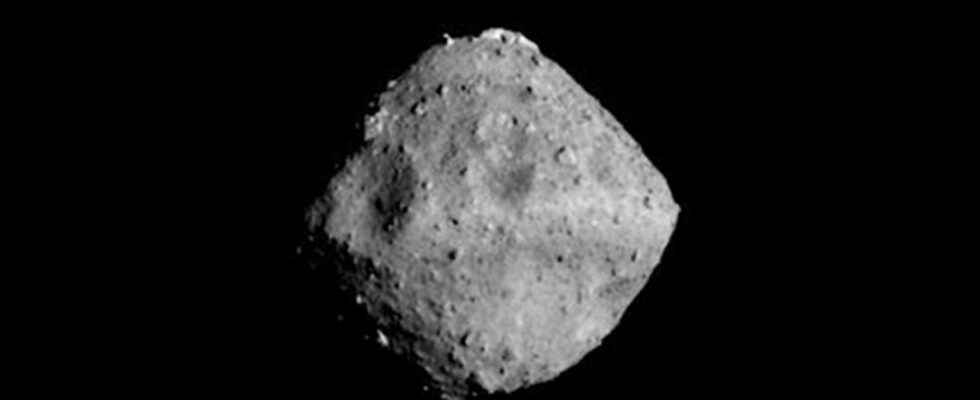It’s been about two centuries since we discovered the existence of asteroids but millennia with regard to that of comets. However, it was not until the second half of the twentiethand century so that we begin to understand their nature and their origin. The revolution in astronautics even allowed us to observe them even at that time more closely, with in particular the spectacular mission of the ESA’s Giotto probe which approached Halley’s Comet in 1986. I’ESAas we know, was going to do much better with the probe Rosetta and comet 67P/Tchourioumov-Guérassimenko.
In recent years, it is the mission Hayabusa 2 which takes center stage for these small celestial bodies by providing not only close-up images of asteroid (162173) Ryugubut also because this mission made it possible to collect samples of this asteroid Apollon type C, potentially dangerous, discovered in 1999. These samples have arrived on Earth and they are still being analyzed.
Cnes participated in the Hayabusa 2 mission on Ryugu. © Cnes
Three Clues to Ryugu’s Origin
The first data concerning Ryugu were, however, somewhat surprising and had led to the proposal of certain hypotheses to account for them. The asteroid has the shape of a spinning top that can be explained well if it has adopted a figure of equilibrium in response to a rapid rotation on itself. All that remained was to account for this rapid rotation.
To also understand its form of balance it is necessary to know that it was discovered that Ryugu could be considered as a pile of rubble composed of small pieces of rock and materials solid agglutinated by gravity rather than a single monolithic rock. One way to explain it is to postulate that it is in fact the fragments produced by the collision between two asteroids which would then have slowly come together under the action of their own force of gravity (the size of Ryugu is 920 meters approximately).
Another data provided by the mission, the small celestial body is surprisingly rich in matter organic.
All these pieces of the puzzle of the identity and origin of (162173) Ryugu have just been reassembled in a completely different way by a research team led by Hitoshi Miura of the Nagoya City Universityin Japan, in an open access article in The Astrophysical Journal Letters.
Planetologists have built a new model that better accounts for all the sightings of Ryugu and come to the astonishing conclusion that it is a dead comet, i.e. what may be left of such an object on a orbit periodic when its repeated passes close to the Sun have almost exhausted its stock of volatile materials – mainly water ice.
A dirty snowball contracting
The scenario developed with equations by Hitoshi Miura and his colleagues Eizo Nakamura and Tak Kunihiro of Okayama University, Japan, is conceptually simple. If Ryugu was indeed a comet then we can compare it to a water ice with chocolate chips melting on the surface and evaporating several times. The nuggets will sediment and eventually concentrate and come together at the bottom of the container containing the initial mixture.
Formed beyond the orbit of Jupiter in the protoplanetary disc initial about 4.5 billion years ago, a comet had to be this famous so-called “dirty snowball” model proposed long ago by astronomer Fred Lawrence Whipplehaving accreted blocks of different sizes with ice encapsulating the whole.
While evaporating, the comet decreases in size, which changes its moment ofinertia as in the case of a skater bringing her arms together. The conservation of cinematic moment will lead her to have her rotation speed accelerate as its size decreases.
The researchers’ model then accounts for this form of spinning top caused by the calculated rotational speed. via from numerical simulations and we also understand why, since it is initially a comet formed in cold regions rich in volatile organic matter, Ryugu seems much more carbonaceous than other asteroids studied from Earth by spectroscopy.
According to the statement from the University of Nagoya accompanying the published scientific work, the objects in the shape of a spinning top and a pile of rubble with high organic content, such as Ryugu and Bennu (the target of the Osiris-Rex mission), would be comet-asteroid transition objects (CAT). ” CATs are small objects that were once active comets but have died out and are apparently indistinguishable from asteroids “Explains Hitoshi Miura who adds:” due to their similarities to comets and asteroids, CATs could provide new information about our Solar System “.
Interested in what you just read?
